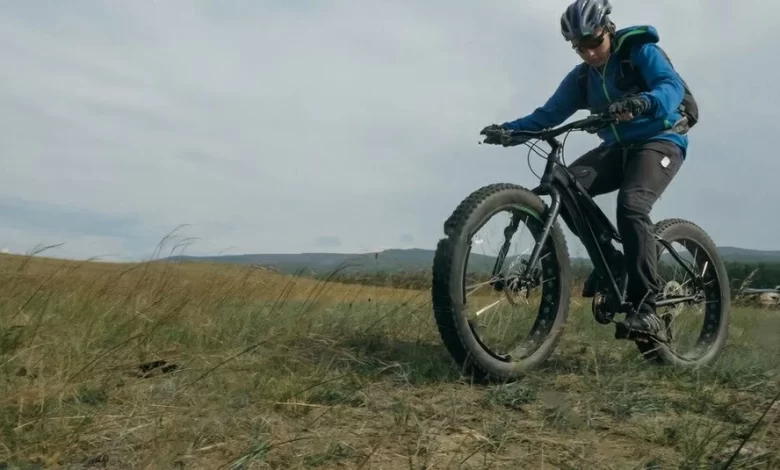Why Are Mountain Bikes So Heavy

It seems pretty obvious why mountain bikes weight more than other bikes. But many people just by looking at a bike don’t see it. So I decided to investigate this more. Mountain bikes are heavy because the parts and components are made bigger, stronger and thicker. This makes them heavier. The tires, frame, suspension, the fork, handlebars, disc brakes, wheel spokes, and the dropper seat post are made to handle rough riding.
What good are all these heavier parts and components if you don’t know what they do or how to use them to their full potential.
How Do Mountain Bikers Use These Heavier Components
The tires on mountain bikes are heavier than other bikes because riders are biking off-road. The terrain is much rougher than pavement. There are gravel trails, dirt, rocky paths. To ride on these surfaces tires need to have good grip and traction.
Therefore the tires need to be heavier and thicker. They need higher knobs for better traction. The tires also need to be wider so there is more surface contact. Strong rims and spokes are require in order to handle severe impact from rocks, logs, roots, and landings.
The frame for a trail bike weighs more so that it can be made stronger and thicker. Because the tubing is larger this creates a larger welding area at each joint making it sturdier. The added metal used for welding adds some weight to the frame.
Frames come in different sizes and are based on a riders height. Generally the taller a rider is the heavier he is, so a larger frame is needed. This bigger frame will support the riders weight as well as all the impact it will undergo from being ridden on the trails. A road bike frame could not handle this.
Road bikes don’t need too much suspension but mountain bikes do. A full suspension bike will be heavier than a hardtail bike. Full suspension is use for going downhill, on single track, going on drop offs, jumps, over rocks, roots, and logs.
If you do not have good suspension your ride will be very uncomfortable. You will be shaking and bouncing all throughout the ride. Every bump you go over will be felt. You will feel it in the butt, lower back, knees, and shoulders and wrists. If you hit a big rock with no suspension you could be thrown from your bike.
How you handle your bike is very important especially through technical trails. So durable heavier handlebars are needed. The handlebars and stem are going to be thicker in order to maintain a good balance. Stability is crucial when going over rough tough terrain.
When you are riding on rough terrain being able to slow down when you need to is essential. That’s why mountain bikes now use disc brakes as opposed to rim brakes. Rim brakes only use the little calipers to stop the tire.
Disc brakes are going to weight more because you are using a disc at the axle of the tire to stop. Disc brakes are more reliable and durable in order to handle the bumps on the trail. Plus they will slow you down and stop you when you need it most no matter what you encounter on the trail.
Finally, adding some extra weight is the dropper seat post. Instead of just sitting on the saddle you have some extra support by inserting a post into the seat tube. But its primary use is to allow you to adjust your saddle quickly and easily while out on the trail. Instead of having to loosen the saddle and readjust the height to where you want it.
All the things you do on a mountain bike you could not do on a road bike. You would break the frame and break the wheels or a wheel would come off. There would be no stability or support when you ride. You would crash and get yourself hurt, and break the bike.
How Heavy Should My Mountain Bike Be
Your bike should be as heavy as it needs to be. You should not choose a mountain bike based on weight. You could have a weight range that you would like to stay in. But thinking I’m going to get a bike that is 32 pounds is not a good idea.
Making sure that you are fitted to a bike properly is more important than how heavy it is. When you are riding a bike that is properly sized and matches your body you will be able to do everything you need to do when mountain biking. How heavy the bike is won’t make much difference.
When you are doing bunny hops, manuals, and wheelies your technique is what matters most. If you are having trouble doing these skills it is not because your bike is too heavy. You have to practice more and work on how you are moving your body on the bike.
Even going uphill the weight of your bike will not be that much of a factor as long as you have been properly fitted to the right bike. If you are slow going up hill you need more training. Or maybe believe it or not you are the one that is too heavy. Lose some weight and increase your speed.
When Will You Need a Heavier Bike
The only time you will need a heavier mountain bike is for going downhill. If you are a downhill racer or you like to go down steep hills then you should increase the weight of your bike or get a downhill bike.
Depending on what kind of bike you currently have you can make it heavier for downhill riding. The first thing would be to get thicker tires, rims, and spokes. Next make sure your bike is full suspension. Finally, you can add more travel to the fork and get a thicker stem and wider handlebars.
What is the Difference in Performance Between a Heavy and Light Mountain Bike
If you begin riding a bike which is heavier than you normally ride you are going to notice it. It is going to feel sluggish. It will be more difficult to maneuver and it will be more difficult to stop and start up again.
On the plus side, once you get going you will be able to maintain your momentum more easily. It will feel more stable and handle the rough terrain better. Plus it will have more traction and stay on the ground more.
When you ride a bike which is lighter than you are use to, you will notice it to. You will be able to start and stop quicker. You won’t feel as tired, and it will be easier to handle. But it won’t be as stable and will have less grip. Over rough terrain, you will feel the bumps more.
There was a case study done between a bike that was 12kg and a bike that was 16kg. The rider was 5 foot 9 inches and around 150 pounds. Using the two bikes they timed him going on a moderate trail. There were ups and downs and twists and turns.
Between the two bike he felt as I explained above. But in the end there was only a difference of 2 seconds between the light and heavy bike. The heavier bike was only 2 seconds slower.
What Are The Heaviest Mountain Bikes
The heaviest mountain bikes you can find are called ‘fat bikes’. Fat bikes have very large tires, they are over sized. These tires are use in order to ride on snow, sand, bogs, and very muddy trails. Fat bikes can be as heavy as 59 pounds.
The heaviest fat bikes have frames made of steel. The tires are extra thick, wide, and knobby. They use large beach cruiser pedals, and you will feel like you are riding on a 4 by 4.






